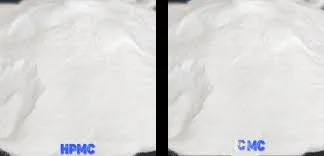
Օգս . 08, 2024 05:35 Back to list
Exploring the Applications and Benefits of Hydroxyethylcellulose in Various Industries and Products
Hydroxyethylcellulose-Based Products Applications and Benefits
Hydroxyethylcellulose (HEC) is a water-soluble, non-ionic polymer derived from cellulose, which plays a critical role in a wide range of industries, including pharmaceuticals, cosmetics, food, and construction. Due to its unique properties, such as viscosity modification, gel formation, and film-forming capabilities, HEC has become a popular choice for formulators looking to enhance the performance and stability of their products.
Chemical Structure and Properties of Hydroxyethylcellulose
HEC is produced by the etherification of cellulose, which involves the substitution of hydroxyl groups on the cellulose chain with hydroxyethyl groups. This modification imparts improved solubility in water and increases the polymer's viscosity. HEC is biodegradable, non-toxic, and generally recognized as safe (GRAS) for use in food applications, making it an environmentally friendly option for many industries. Its ability to form gels and create viscosity is crucial for its function as a thickening agent, binder, and stabilizer.
Applications in Pharmaceuticals
In the pharmaceutical industry, hydroxyethylcellulose is commonly utilized as a thickening agent and stabilizer in various formulations, including suspensions, gels, and ointments. Its unique properties allow for the controlled release of active ingredients, enhancing the bioavailability of medications. Additionally, HEC serves as a component in hydrogel formulations that can be applied in wound healing, facilitating moisture retention while providing a protective barrier against contaminants.
Role in Cosmetic Formulations
hydroxyethylcellulose based

HEC is extensively used in the cosmetic and personal care industries due to its thickening and emulsifying properties. It is found in products such as shampoos, conditioners, lotions, and creams. By providing improved texture and consistency, HEC enhances the sensory experience of consumers when applying these products. Moreover, its film-forming abilities contribute to the long-lasting performance of cosmetics, such as makeup products that require a smooth application and optimal adherence.
Contribution to the Food Industry
In food applications, hydroxyethylcellulose is used as a thickener and stabilizer in various products, including salad dressings, sauces, and dairy products. It helps to create a desirable mouthfeel while preventing the separation of ingredients. Its water-retention properties can extend the shelf life of certain food items by minimizing moisture loss. HEC is suitable for gluten-free formulations, providing structure and texture to baked goods without compromising quality.
Construction and Building Materials
The construction industry benefits from hydroxyethylcellulose in the formulation of adhesives, sealants, and cement-based products. HEC acts as a thickener, improving the application properties of these materials. Its water-retention capability allows for extended working times and enhances the adhesion properties of construction materials. Furthermore, HEC contributes to the durability and workability of cement mixtures, making it an asset for various building applications.
Conclusion
Hydroxyethylcellulose is a versatile polymer with a wide range of applications across several industries. Its unique properties, including viscosity modification, gel formation, and film-forming capabilities, make it an essential ingredient in pharmaceuticals, cosmetics, food, and construction. As industries continue to seek eco-friendly and safe alternatives in their formulations, HEC will likely play an increasingly significant role in developing innovative products that meet consumer needs while prioritizing sustainability. With ongoing research and development, the potential of hydroxyethylcellulose-based solutions is bound to expand even further, paving the way for new applications and advancements.
-
The Widespread Application of Redispersible Powder in Construction and Building Materials
NewsMay.16,2025
-
The Widespread Application of Hpmc in the Detergent Industry
NewsMay.16,2025
-
The Main Applications of Hydroxyethyl Cellulose in Paints and Coatings
NewsMay.16,2025
-
Mortar Bonding Agent: the Key to Enhancing the Adhesion Between New and Old Mortar Layers and Between Mortar and Different Substrates
NewsMay.16,2025
-
HPMC: Application as a thickener and excipient
NewsMay.16,2025
-
Hec Cellulose Cellulose: Multi functional dispersants and high-efficiency thickeners
NewsMay.16,2025







